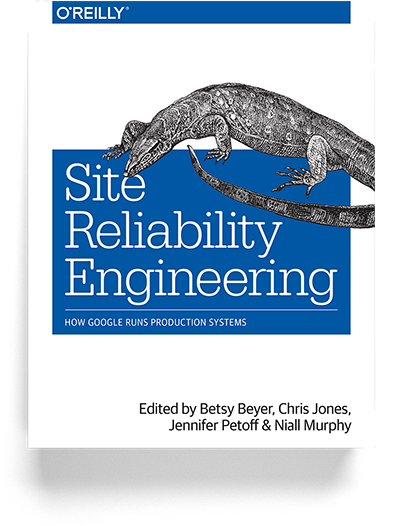In Plain Sight
“The future is already here — it’s just not very evenly distributed.” – William Gibson
This post is about a set of powerful management techniques that have each been around for over a decade, but that still haven’t yet diffused into everyday use, and that hence still appear novel to the uninitiated.
Wardley Maps
Simon Wardley developed his mapping technique whilst he was CEO at Fontango.
A Wardley map is essentially a value stream map, anchored on user need, and projected onto a X axis of evolution (from genesis to commodity) and a Y axis of visibility.

The primary purpose of a Wardley map is to provide situational awareness, but they have a number of secondary effects that shouldn’t be ignored:
- Maps provide a communication medium within a group that has a pre determined set of rules and conventions that help eliminate ambiguity[1].
- Activities evolve over time, so map users can determine which activities in their value chain will evolve anyway due to the actions of third parties, and which activities they choose to evolve themselves (by investment of time/effort/money).
- Clusters of activities can be used to decide what should be done organically within an organisation, and what can be outsourced to others.
Working Backwards
Amazon’s CTO Werner Vogels wrote publicly about their technique of working backwards in 2006, and the origin stories of services like EC2 suggest that it was well entrenched in the Amazon culture before then[2].
The technique involves starting with a press release (and FAQ) in order to focus attention on the outcome that the organisation is trying to achieve. So rather than the announcement being written at the end to describe what has been built, it’s written at the start to describe what will be built, thus ensuring that everybody involved in the building work understands what they’re trying to accomplish.
A neat side effect of the technique is that achieveability gets built in. People don’t tend to write press releases for fantastical things they have no idea how to make happen.
Site Reliability Engineering (SRE)
class SRE implements DevOps
SRE emerged from Google as an opinionated approach to DevOps, eventually as a book. Arguably SRE is all about Ops, complementing Dev as practiced by SoftWare Engineers (SWE); but the formalisation of error budgets and Service Level Objectives (SLOs) provides a very clean interface between Dev and Ops to create an overall DevOps approach.

SRE isn’t the only way of getting software into production and making sure it continues to meet expectations, but for organisations starting from scratch it’s a well thought through and thoroughly documented approach that’s known to work (and with a pre fabricated market of practitioners); so the alternative of making up an alternative seems fraught with danger. It’s no accident that Google’s using SRE at the heart of its Customer Reliability Engineering (CRE) approach where it crossed the traditional cloud service provider shared responsibility line to work more closely with its customers[3].
Pulling it all together
These techniques don’t exist in isolation. Whilst each is powerful on its own they can be used in combination to greatly improve organisation performance. Daniel Pink’s Drive talks about Autonomy, Mastery and Purpose in terms of the individual, but at an organisation level[4] they might fit like this:
- Autonomy – Wardley maps provide a way to focus on the evolution of a specific activity, and with that determined the team can be left to figure out their way to achieving that.
- Mastery – SRE gives us a canned way to get software into a production environment , making it clear which better skills are needed and must be brought to bear.
- Purpose – the outcome orientation that comes from working backwards provides clarity of purpose, so nobody is in doubt about what they’re trying to accomplish.
Notes
[1] I commonly find that when I introduce Wardley mapping to senior execs their initial take is ‘but that’s obvious’, because they internally use something like the mapping technique as part of their thought process. I then ask them ‘do you think your entire team shares your views of what’s obvious?’.
[2] Arguably a common factor for many of these approaches is that they become public at a point where the companies they emerged from have determined that there’s nothing to lose by talking about them. In part that’s down to inevitable leakage as staff move on and take ways of working with them, and in part it’s because it does take so long for these techniques to find widespread use amongst potential competitors.
[3] A central argument here is that achieving ‘4 nines’ availability on a cloud platform is only possible when the cloud service provider and customer have a shared operations model, and sharing operations means having a mutually agreed upon mechanism for how operations should be done.
[4] An organisation might be an Amazon ‘2 pizza’ team, or an entire company.
Filed under: culture | 2 Comments
Tags: DevOps, management, maps, SRE, Wardley, working backwards
Have you used the Business Model Canvas with the external forces over time view? I like it for the same reasons you listed here (though maybe not as comprehensive in the mastery aspect) and am wondering what your thoughts are on which is better if you’ve used both.
I’ve used Business Model Canvas a few times, but I’d not previously heard of the external forces over time view, which could mean I’ve been using the canvas pretty superficially. My personal experience with it is that it’s a way of ensuring that a wide variety of considerations are taken into account (and not ignored or missed out), and hence it’s useful for fleshing out a company level business plan; but it feels a bit heavyweight for project (or even product) management within a company.
I know people have asked Simon in the past about mapping vs BMC, and he’s stated that he sees them as complementary (first map, then canvas).